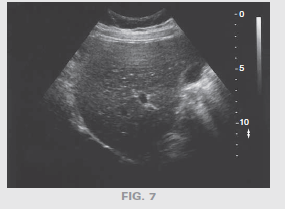1. If the amplitude of a wave doubles, the intensity will:
a. double
b. quadruple
c. decrease by one half
d. decrease by one tenth
2. Structures that have lower amplitude echoes than adjacent tissues are termed:
a. anechoic
b. isoechoic
c. echogenic
d. hypoechoic

3.For refraction to occur, which of the following must take place?
a. perpendicular incidence and a change of velocity
b. perpendicular incidence and a change in impedance
c. oblique incidence and a change of propagation speed
d. oblique incidence and a change in the transmission angle
4. Power Doppler imaging displays flow:
a. rate
b. presence
c. direction
d. characteristics
5. The concentration of scan lines within the field of view directly relates to the:
a. frame rate
b. temporal resolution
c. pulse repetition period
d. pulse repetition frequency
6. A hydrophone is an instrument used to measure:
a. cavitation
b. thermal index
c. acoustic output
d. mechanical index
7. A rise in tissue temperature is significant when it exceeds:
a. 1° C
b. 2° C
c. 5° C
d. 9° C
8. For an unfocused transducer, two near-zone lengths are equal to the:
a. transducer diameter
b. distance to the focus
c. distance to the reflector
d. active element thickness
9. What artifact displays a series of closely spaced echoes distal to a strong reflector?
a. speckle
b. multipath
c. comet tail
d. shadowin
10. Angling the color Doppler box to the right or left changes the:
a. frame rate
b. flow velocity
c. Doppler shift
d. pulse repetition frequency

